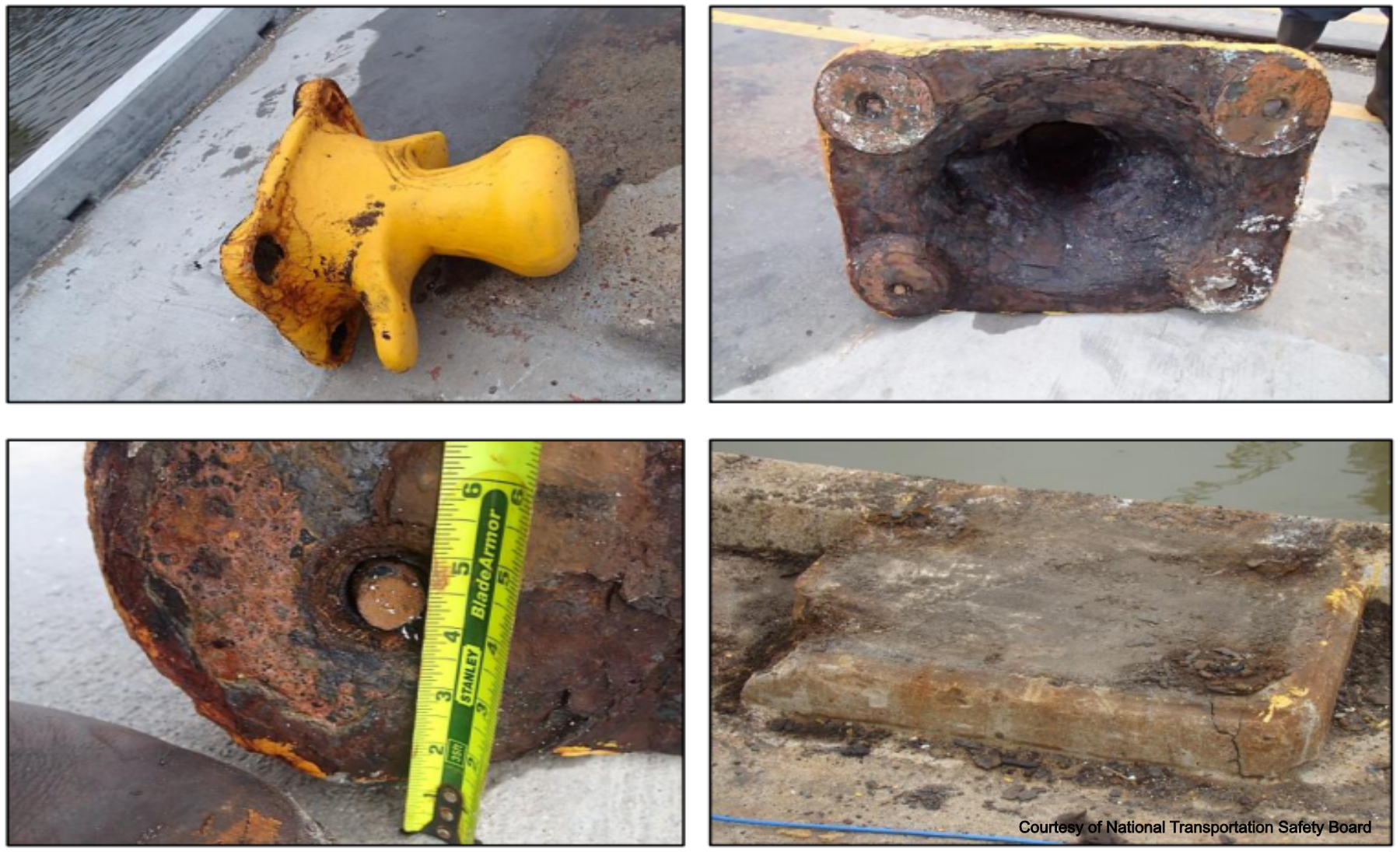Bollard testing
The consequences of bollard failure

The humble bollard, found on quays, docks, and harbours all around the world is a vital if somewhat overlooked piece of equipment. The mooring of vessels from inflatable dinghies to super tankers is impossible without an appropriately robust method of tethering, which includes both the method of tethering (rope, chain, steel hawser) and the installation to which it is tethered (which includes bollards, cleats, fairleads, capstans, and mooring rings).
Clearly the original installation of mooring equipment, at the time of the construction of the berthing facility, would have considered the general or maximum size of vessels likely to use it. Equivalent forces likely to be imposed on the various equipment would have been calculated and used to specify both the type and size of equipment as well as the substrate onto which it was fixed. The berthing of seaborne vessels takes place, however, in often naturally hostile environments and under operating conditions which can affect operational performance. The original specifications of mooring equipment can, therefore, be rapidly negated over time.
The failure of mooring equipment, whether through failure of the equipment itself, or its fixings, or the surface to which it is attached, can range from mildly inconvenient to catastrophic. In April 2013, the Carnival Triumph broke free of its moorings in Mobile, Alabama colliding with two other vessels in the harbour channel. Three bollards to which the Triumph was attached failed and the incident resulted in one fatality and caused approximately £2.5 million of damage.





